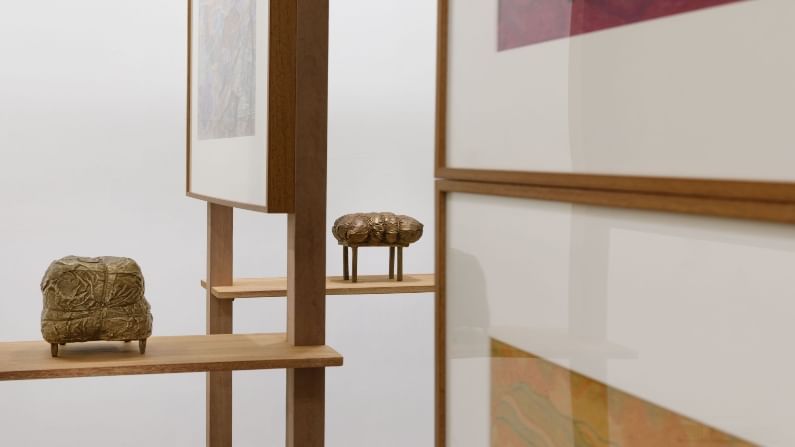Exhibition of kantha stich guided by Meera Mukherjee and a young artist on display in this Kolkata gallery
The kanthas are juxtaposed with Dutta’s expression on paper, sculptures and drawings

The Experimenter gallery in Kolkata in collaboration with The Seagull Foundation for the Arts, has put on display an exhibition of kantha works that were guided by noted sculptor Meera Mukherjee (1923-1998) and young artist and artworks by young sculptor Adip Dutta. The two shared a nuanced relation and the exhibition titled ‘Nestled’ tries to explore it.
Mukherjee’s influence on Dutta’s work was formative to his visual language. The exhibition attempts to capture that dialogue between a young sculptor and his mentor through a wide range of experiences and moments of lucidity.
Though Mukherjee is acclaimed as a sculptor, in this exhibition a few kantha stiches are on display. For the last 25 years of her life, Mukherjee engaged herself in training children from poor families on how to paint and draw. Some of the drawings that they did under her guidance were developed into kantha work.
“Meera mashi would supervise the drawings, guide the children to choose colours and also the process when the stitch work was executed,” said Dutta.
More than 20 of the kanthas and an almost equal number of Dutta’s artworks are on display at the gallery. The works of the latter are mainly drawings, sculpture and compressed cotton work.
The kanthas are juxtaposed with Dutta’s expression on paper, sculptures and drawings.
The exhibition thus puts on display experiments that harmoniously brought together groups of people to create a whole language of expression.
Dutta said the time he spent with “Meera mashi” in his teens left an indelible impression on his mind and found expression in his art.
Meera Mukherjee (1923-1998) is often credited with infusing modernity into Bengali sculpture. Though she enrolled herself at the Indian Society of Oriental Art School when she was just 14, she got enamoured by sculpture at Delhi Polytechnic and later at Hochschule fur Bildende Kuenste in Munich where she went to study in 1953.
One of the profound influences on Mukherjee came from the dokra artists of Bastar in Chhattisgarh with whom she worked as an apprentice. She innovated on the bronze casting that she learnt from Bastar.
Her technique consisted in first sculpting the artwork in wax to retain the tactile nature of the material. This technique lent a delicate feeling to her sculpture despite the hardness of bronze.
Mukherjee often used rolls and strips to decorate the surface.
She chose her subjects from the life around her and from the rural life of Bengal – weavers, fishermen, workers and women in their domestic work. Various elements of Bengal’s nature, and performing arts also found a place in her artworks that were often regarded as a celebration of freedom, liberation and humanism.
The exhibition is on until March 31.